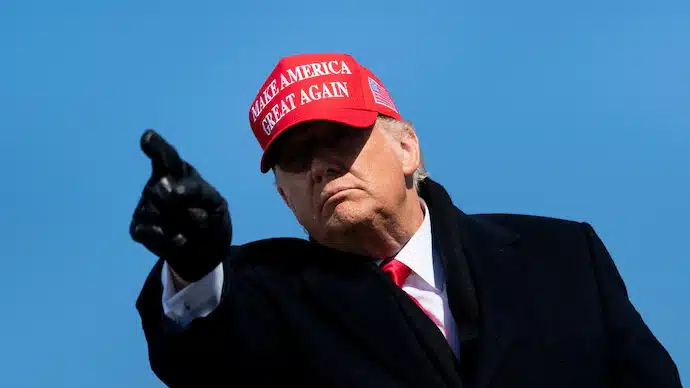Trump Tariff: Limited Growth Impact and Potential Export Challenges

US President Donald Trump’s recent decision to impose a 25% tariff on Indian imports starting August 1, along with an unspecified penalty for purchasing Russian oil and defense equipment, is expected to have a limited effect on India’s overall economic growth. While short-term sentiment may be negatively impacted, forecasts suggest that India’s GDP growth will remain in the range of 6.2% to 6.5% for the current fiscal year. Analysts predict that the potential impact on GDP could be between 30 to 50 basis points, indicating a resilient domestic economy despite external pressures.
Impact on Economic Growth
Despite the looming tariffs, experts believe that India’s economic growth will not be significantly hindered. The country is projected to maintain a GDP growth rate of 6.2% to 6.5% this fiscal year, largely driven by strong domestic demand. A recent report from the finance ministry highlighted that inflation is within target levels and monsoon conditions are favorable, contributing to a stable economic environment. Aditi Raman, an associate economist at Moody’s Analytics, noted that while the U.S. is India’s largest trading partner, the Indian economy is more focused on domestic consumption than on international trade. This domestic orientation may help buffer the economy against the adverse effects of the tariffs.
Sector-Specific Concerns
Certain sectors are likely to feel the brunt of the tariffs more than others. Industries such as pharmaceuticals, gems, and textiles may experience challenges due to the increased costs associated with the tariffs. Additionally, the agricultural and dairy sectors could face scrutiny, as India has historically been hesitant to grant market access in these areas. Analysts emphasize that the extent of the impact will depend on the final terms of the tariffs and any penalties imposed. Barclays has estimated that if the tariffs take effect, the GDP growth impact could be around 30 basis points, but they anticipate that negotiations may lead to lower final tariffs.
Global Economic Context
The International Monetary Fund (IMF) has recently revised its GDP growth forecast for India, raising it from 6.2% to 6.4% for the fiscal year 2026. This adjustment reflects a broader optimism regarding global economic conditions, particularly as trade tensions begin to ease. Experts suggest that while the tariffs may pose a challenge, they are unlikely to derail India’s position as the fastest-growing major economy. The resilience of the domestic market, coupled with positive indicators from various sectors, suggests that India can navigate these external pressures effectively.
Future Outlook
The future impact of the tariffs and penalties remains uncertain, as ongoing negotiations may alter the landscape. Economists caution that the severity of the penalties will play a crucial role in determining the overall effect on India’s GDP growth. Aditi Nayar, chief economist at ICRA, highlighted that the proposed tariffs are higher than previously anticipated, which could create headwinds for growth. However, the consensus among analysts is that India’s robust domestic demand and economic fundamentals will help mitigate the potential negative effects of these trade measures. As discussions continue, stakeholders will be closely monitoring developments to assess their implications for the Indian economy.
Observer Voice is the one stop site for National, International news, Sports, Editor’s Choice, Art/culture contents, Quotes and much more. We also cover historical contents. Historical contents includes World History, Indian History, and what happened today. The website also covers Entertainment across the India and World.
Follow Us on Twitter, Instagram, Facebook, & LinkedIn

